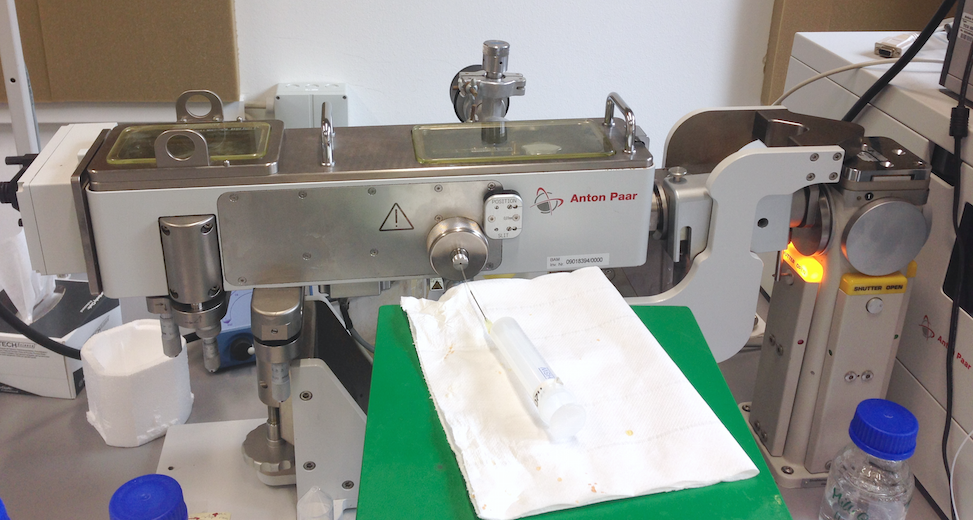
I have been able to play around with this slit-focused system for a few weeks now (an Anton Paar SAXSess), and it turns out we have some issues with the determination of important correction parameters.

The big issue we found was that the transmission factor could not be determined the way it should be. In this instrument, a semitransparent beamstop should let us measure the intensity of the attenuated direct beam. When a thin, 1 mm diameter polymer capillary in the sample position is filled with water, we would expect a 60% reduction of the intensity of this direct beam signal (1 mm of water absorbs about 60% of the copper k photons). We are fairly consistently seeing only a 40% reduction.
So we checked the capillary diameter under the microscope, which was a quite consistent 1 mm. We also checked the alignment of the capillary, which was quite well centered, ruling out two sources of error. We realigned the beamstop and reduced the width of the beam, thinking that perhaps there was some non-uniformity unaccounted for, but this too had no effect.
Finally we considered the possibility of high-energy contamination in the beam. High-energy contamination in combination with semi-transparent beamstops do not go together well, as you will have a lot of radiation hardening going on. Figure 1 shows the dramatic change in energy spectrum an absorber can have, with the fraction of high energy in the post-absorber spectrum dominating, where before it was but a minor component.

We have a system with multilayer optics, which should filter out the higher energy radiation, but depending on the design it may pass through some of that. We tested the effect of a reduction in acceleration voltage on the X-ray generator, checking the transmission factor both at 40 kV and 20 kV acceleration voltage. The lower acceleration voltage reduces the maximum energy of photons that could possibly exist in the spectrum, and indeed we saw that the absorption factor at lower energies was closer to the 60% than we had achieved before.
Suspecting a misaligned multilayer, we spent some time realigning the entire Kratky camera (three times in total). Unfortunately, the realignment did not resolve our issues, though we did learn well how to align these instruments (it can be done completely in about four hours, hands-on experience that will likely prove to be valuable later).

* commenting may be problematic for some reason at the moment. I will look into it shortly. *
A comment from Tilman G.:
“Have you tried hardening your beam artificially with an aluminum absorber in the primary beam path? Being at the BAM you should have some rather well defined foils around which you could use to blank out the 8 keV radiation. If you still see something, more than the calculated attenuation from the foils your suspect is clear.”